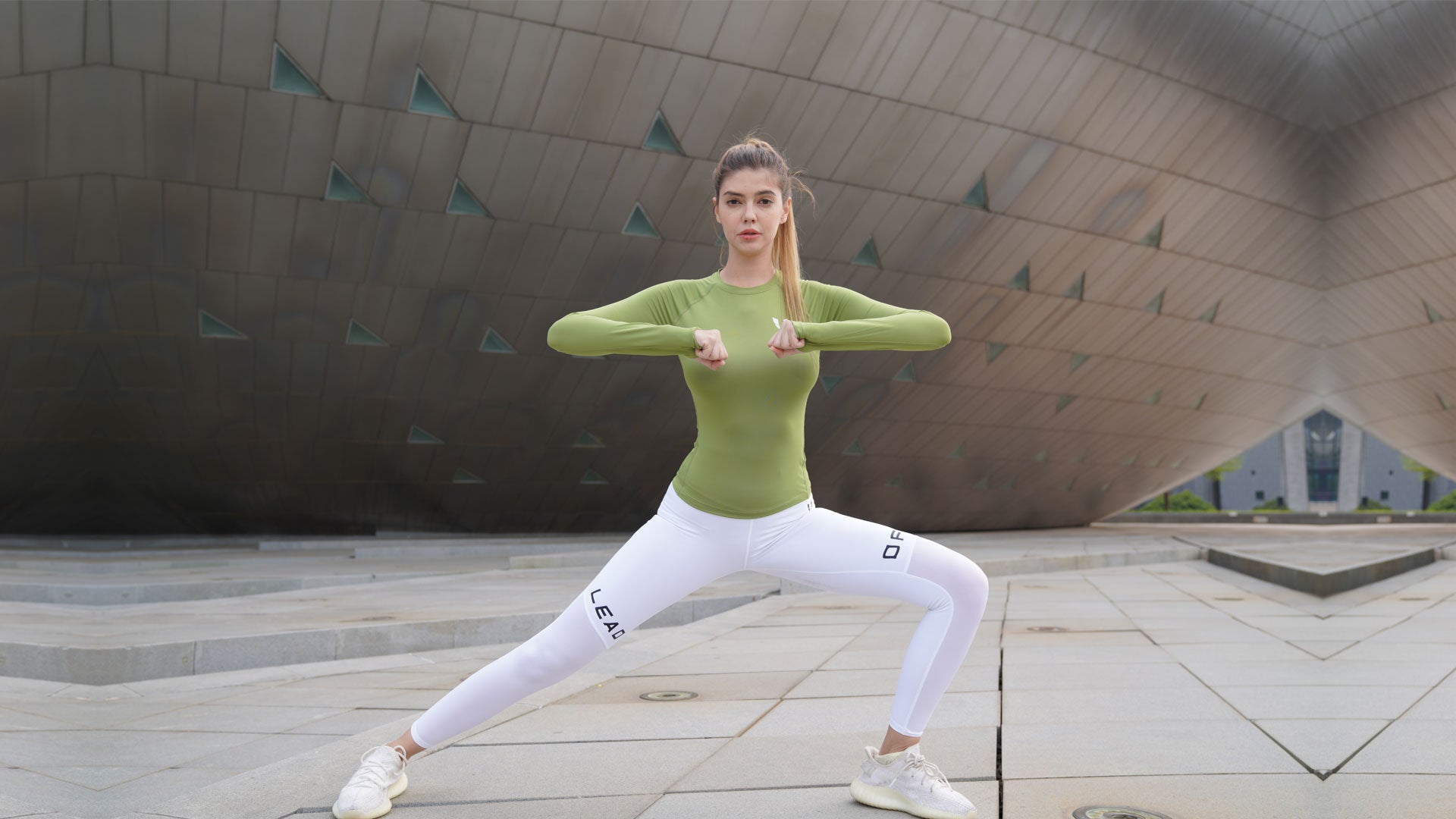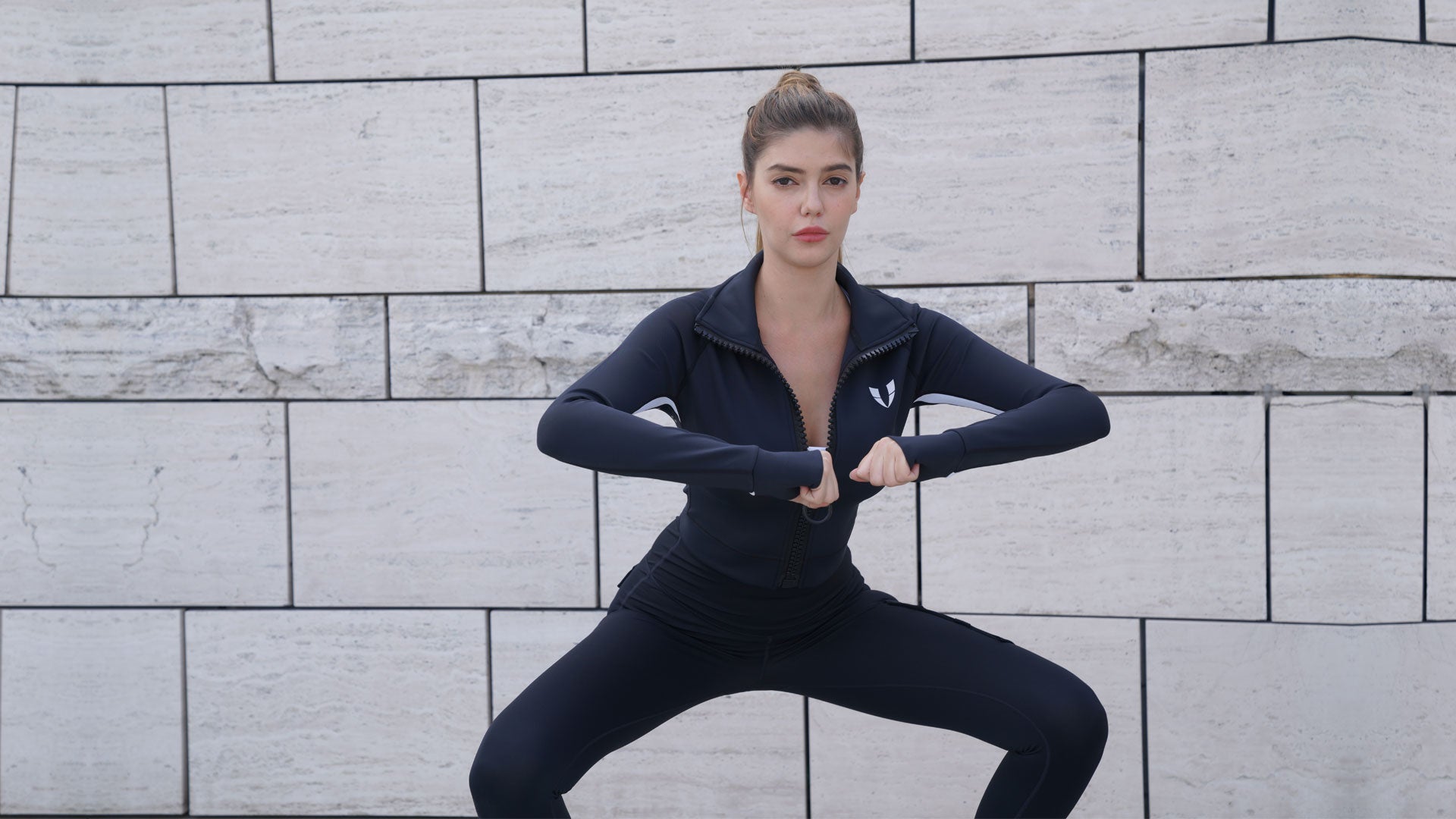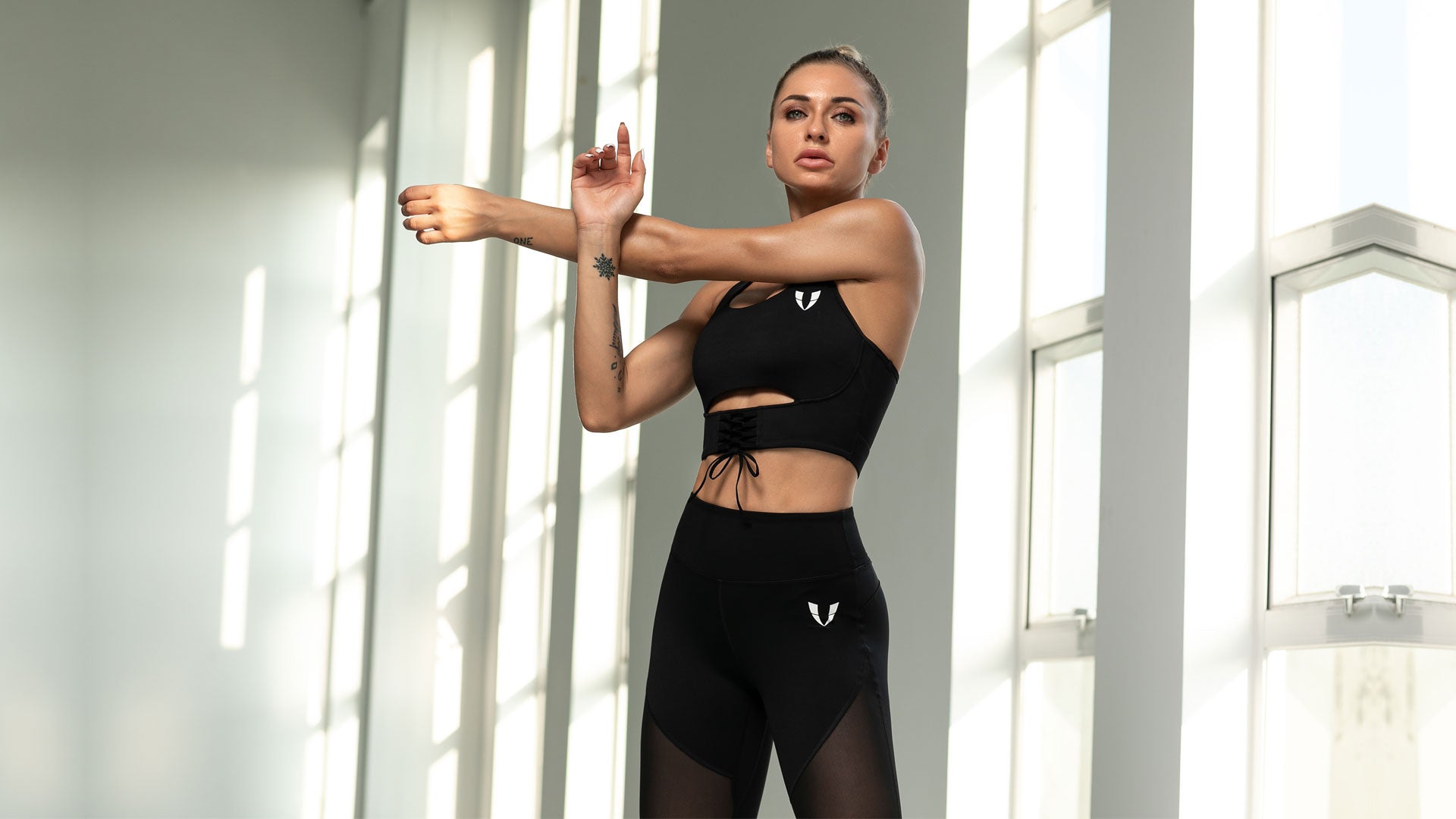
How to increase shoulder muscles?
The most flexible joint in the body is the shoulder joint, making it susceptible to injury. This is one reason why it is important to increase strength in the shoulder muscles. Strong shoulder muscles help when people lift, carry, and reach for things in their everyday tasks. They also help with throwing balls and swinging equipment in sports.
Exercises that work the shoulder muscles from multiple angles will build definition. This shoulder workout will give women toned and shapely shoulders, creating the look they want in their favorite sports bra or tank top:
Dumbbell Lateral Raises
This exercise targets the lateral deltoid, which is the middle part of the deltoid muscle. It isolates this area of the shoulders better than any other exercise. It is best to start with light weights to develop proper form.
Directions
The dumbbells are held with the palms facing in. The feet are about shoulder-width apart, the shoulders are pulled back, the chest is lifted, and the weights are lifted at the sides to shoulder height. The top position is held for a second or two. Pausing at the bottom position, rather than stopping, keeps the tension tight throughout the exercise. The arms remain fairly straight. It is important not to use momentum to lift the weights up. If the arms swing (rather than raise) in the last few reps, then the weight is probably too heavy. Slow and controlled reps prevent momentum from being used. The weight is also likely too heavy if the hands lift above the shoulders.
Variations
The exercise can also be done seated, or by pulling a handle up with one arm on a cable machine. The handle can either start in front of the body or behind the body (which stretches the shoulder even more). Lateral raises can also be performed with one-arm by lying on the side of an inclined bench to engage the core.
Dumbbell Front Raises
This exercise primarily works the anterior (front) deltoid. It is a similar movement to lateral raises, and the same weight can likely be used for both exercises.
Directions
Using the same stance as for lateral raises, the weights can either start at the sides with the palms facing in (the wrists rotate on the way up until the palms are facing down) or they can start in front with the palms facing down. The weights are raised to shoulder level with the arms slightly bent. The movement is slow and controlled. Like lateral raises, it is important not to use momentum. Keeping the abs tight will prevent rocking back and forth. Reaching for the wall in front (rather than simply lifting the arms) will fully stretch the shoulders.
Variations
Front raises can also be performed with kettlebells, a barbell, a weighted plate, or a resistance band with handles (the band is placed under the feet). They can also be done on a cable machine, with hands placed slightly wider than shoulder-width apart on a long bar. Alternating raises, with one arm coming up at a time, is a great way to isolate the anterior delts. Raising the arms up together engages the core more.
Bent-Over Reverse Flys
The posterior (back) deltoid is isolated in this exercise. Strengthening the rear delts improves posture and can prevent back and shoulder pain.
Directions
With the knees slightly bent, the body bends over until the chest is almost parallel to the floor. The dumbbells start close together, with the arms slightly bent and the back flat. The arms lift out to the sides to shoulder level, with the shoulder blades squeezed at the top position. Pointing the thumbs down on the way up will further activate the shoulders. If the weight is too heavy, other muscles will be used to lift the dumbbells and the rear delts won't be isolated.
Variations
The exercise can also be done seated, either on a bench or a stability ball. From a seated position, less weight may be needed since the leg muscles aren't used as much. Another variation is to lie on an inclined bench. To prevent momentum from being used, it is important to keep the chest pressed against the bench. The exercise can also be done with one arm on a cable machine by pulling the handle across the body to shoulder level.

Cable Machine Face Pulls
This is another exercise that targets the rear delts. It's a great way to add a pulling movement to a shoulder workout, and muscular balance can be achieved by incorporating both pushing and pulling exercises.
Directions
The exercise is most commonly done from a standing position. Using a rope attachment with two handles at a high position on the cable machine, the rope is pulled toward the head (not the chest) with the palms facing down. The rope is pulled out to the sides at the finished position and the shoulders are squeezed. The elbows should remain higher than the wrists during the pull.
Variations
Face pulls using a TRX is an alternative exercise. Leaning all the way back while holding the handles, the body is pulled forward and the handles move toward the face. Other exercises that work the same muscles as the face pull include pullups and lat pulldowns.
Shoulder Presses
This exercise primarily targets the anterior and lateral delts. The posterior delts, triceps, and trapezius are also used. Shoulder presses help to improve performance in the bench press, since the movements are similar (only at a different angle).
Directions
Standing with the feet about shoulder-width apart, the arms form a 90-degree angle with the upper arms parallel to the floor at the starting position. With the palms facing forward, the dumbbells are pressed overhead. If the dumbbells come too low on the way down, there is a tendency to use momentum. If the weight is too heavy, it is difficult to have a full range of motion and the reps might be performed too fast.
Variations
The exercise can also be performed seated, although this position doesn't engage the core as much. Another common way to do shoulder presses is with a barbell. The hands are placed just outside of the shoulders, and the bar moves over the middle of the foot. A similar exercise is the push-press, which can be done with dumbbells or with a barbell. The legs bend to create momentum, and then the legs extend and the weight is pressed overhead in an explosive motion.
One-Arm Landmine Press
While the landmine press targets the chest muscles, the one-arm landmine press focuses on the shoulders. In a landmine exercise, the barbell is angled with one end of the barbell on the floor.
Directions
Holding one end of the barbell in one hand with the knees slightly bent, the bar is pressed up with a full extension. To fully stretch the shoulder, it is best to reach forward while pressing up. To keep the shoulder isolated, it's important not to lift the torso to help with the movement on the way up.
Variations
To engage the legs more, the bent legs can be brought farther apart (almost into a lunge stance). The exercise can also be done from a kneeling position. Resting on one knee should be done before attempting to go on both knees. Having both knees on the floor creates instability, which makes the core work harder, but it is also more difficult.
Upright Row
The anterior and lateral heads of the deltoids are primarily used in this exercise, while the trapezius, rhomboids, and biceps are also worked.
Directions
Holding a pair of dumbbells with the palms facing down, the arms hang straight down in front in the starting position. The weights are raised to chest level, and they are kept close to the body on the way up and down. The arms are fully bent at the top position, with the elbows above the wrists and the traps squeezed. Lifting the arms too high increases the risk of injury. It is important not to lean forward on the way down or lean back on the way up. Leaning will make the exercise easier but it won't activate the shoulders as much. The torso needs to remain upright to engage the core.
Variations
Other common ways to perform the exercise are with a barbell or on a cable machine. A wider grip on the bar targets the lateral delts, while a closer grip targets the anterior delts. Another option is an upright row to press. In this exercise, the dumbbells are flipped after the upright row, with the palms facing forward for the overhead press.
Pushups
In addition to working the chest muscles and triceps, pushups are great for strengthening the shoulders. No equipment is required, so the exercise can be done anywhere. There are many ways to progress into full pushups, such as doing knee pushups or wall pushups
Directions
Starting in a high plank position with the wrists directly under the shoulders, the chest is lowered to the floor. Flaring the elbows out will put stress on the shoulders. Tightening the core helps to keep the back flat. Keeping the head up helps to keep the body in a straight line.
Variations
Incline pushups (hands elevated) and decline pushups (feet elevated) are two variations of this exercise. Pike pushups are great for toning the shoulders. For this variation, downward-facing dog is the starting position and the head is brought to the floor.
Incorporating These Exercises into a Workout Plan
There are many ways to increase shoulder strength with minimal or no equipment. The shoulder exercises that have been discussed also work other muscles in the upper body and core, so they can help to build a strong foundation for an exercise program.



اترك تعليقًا
This site is protected by hCaptcha and the hCaptcha Privacy Policy and Terms of Service apply.